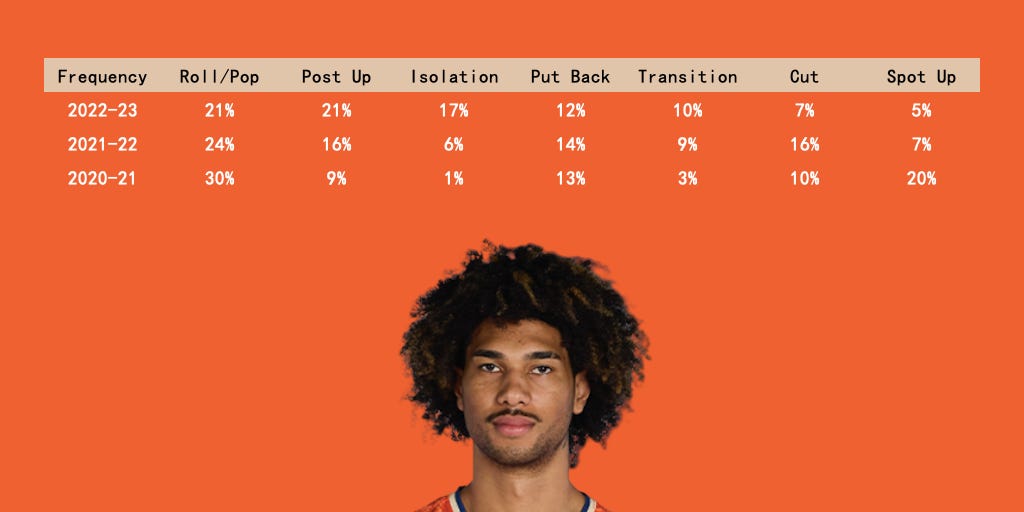Exploring how Keanu Pinder has reached a new level - again!
Pinder’s rapid rise from iffy rotation piece to star building block has been one of the most fascinating NBL player development stories in recent years.
Through eight games, five of those wins, Keanu Pinder has delivered All-NBL production. Last season was already a development success, which helped bury unfavourable memories of his early struggles in Adelaide, but this second breakthrough act has been even more impressive.
Let’s look at what’s changed over the past two seasons, and the kind of role he’s got on both ends of the floor now.
Offence
The surge to 17.1 points per game and the third highest usage rate in the league has been sudden. Despite prior professional experience before joining Adelaide as a 25 year old, Pinder’s first NBL campaign was more in line with your typical early-twenties rookie. He was unpredictable with the ball, he committed 5.7 fouls per 36 minutes and a bunch of unforced turnovers. Pinder struggled to showcase his strengths and find the right mix of opportunities to positively contribute.
There were flickers of growth as the season wore on, showing just enough in the back half of the season to keep you interested. Adam Forde, with whom he has a previous relationship with, recruited him to Cairns and swiftly put him on an upward trajectory.
Forde has spoken about the recruitment decision quite a few times now, with his reasoning centring around the idea of leaning into what Pinder had done well in Adelaide. What had worked in a small sample was being an offensive threat as the screener in pick and roll actions — scoring an above average 1.14 points per play according to my tracking numbers. He was also able to show some value with his offensive rebounding.
Year one in Cairns eliminated a chunk of floor spacing responsibilities for Pinder — a positive move, given that he has never had much three-point success. He continued on as a legit screen and roll threat (1.36 PPP on rolls or pops), but received a greater share of easy finishes at the rim out of the dunker spot or in transition, as well as an increase in one-on-one reps. His overall percentage of attempts that came at the rim rose from 48% to 78% per spatialjam.com.
Forde simplified his approach with Pinder when speaking postgame this season:
“All we’ve done is expanded [what he is good at], given him more opportunities, and put him in an environment where he can blossom and grow.”
Year two in Cairns has seen his play get really interesting! Pinder is now a legitimate focal point of the offence, with 38% of his plays ending with a post-up or isolation. Hunting mismatches, of which there are suddenly many, has become a top priority.
Forde’s decision to shift Pinder permanently to centre has also helped open up this area of his game. Bigger bodies have struggled to keep up with the speed of his first step or spin move, or run with him in the open court. Sharing time with shooting bigs like DJ Hogg, Sam Waardenburg, and Majok Deng also maximises his space to attack.
Whilst he is still a little prone to out of control possessions, the regular pressure Pinder has been able to put on the rim has given Cairns the necessary balance alongside their league-leading three-point attempt rate. Relative to the rest of the league, his efficiency on both post-ups and isolation plays have been above average.
In order to take on this added scoring load, Pinder needed to be processing the game at a much higher level than he did earlier in his career. Not only has he done that with his scoring, but he’s also reading the floor better as a passer.





